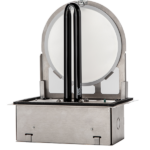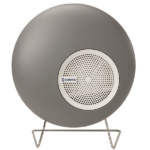Viruses are among the more fascinating entities in science as they toe the line between living and non-living. They can come in various shapes, sizes, and structures, and they all have unique characteristics that dictate their behavior and interaction with host cells. But there is a way to differentiate among types of virus. With some, there is the presence of an envelope. With others, there is an absence. Enveloped viruses vs. non-enveloped viruses is a distinction that’s important to know.
Enveloped Viruses
These are characterized by a lipid bilayer surrounding their protein coat, known as the viral envelope. The outer membrane is often derived from the host cell during viral budding. The lipid envelope is studded with viral glycoproteins that are vital in host cell recognition and entry.
The envelope on these viruses serves as a disguise. It allows them to evade detection by the host’s immune system. The lipid layer also aids in the fusion of the viral envelope with the host cell membrane. Viral genetic material is then released into the host cell. Some examples of enveloped viruses include COVID-19, influenza, RSV, HIV, and more.
Advantages for Enveloped Viruses
- Camouflage and Immunity Evasion: Enveloped viruses can escape immune surveillance because of the lipid element. This makes it difficult for the immune system to recognize and eliminate the virus.
- Cell Entry Mechanism: Enveloped viruses enter host cells more efficiently due to membrane fusion.
- Host Range Expansion: These viruses can infect many cell types because the envelope assists in broadening the host range.
Non-Enveloped Viruses
Rather than a lipid membrane, non-enveloped viruses consist of a protein coat. This is known as a capsid and encases the viral genetic material. To enter host cells, non-enveloped viruses have alternative strategies that often rely on receptor-mediated endocytosis. Some examples of non-enveloped viruses include the adenovirus, norovirus, and rhinovirus (the common cold).
Advantages for Non-Enveloped Viruses
- Stability: Non-enveloped viruses are more stable outside of host cells. They resist environmental conditions such as changes in temperature and pH, which contribute to their ability to survive in various environments.
- Release Mechanism: These viruses use cell lysis as their release method, where the infected cell ruptures, releasing viral progeny. This is what allows the virus to spread so efficiently.
- Ease of Transmission: Non-enveloped viruses withstand very harsh conditions, which makes them more adept at transmission through inanimate objects and other surfaces.
Because enveloped viruses have so many commonalities, when testing devices such as those for air purification, many testing results can be ascribed to all other enveloped viruses. The same is true for non-enveloped viruses. A device like something Synexis offers, using Dry Hydrogen Peroxide (DHP®) that is proven effective on a virus like SARS-CoV-2 is also likely to be effective on a virus such as RSV, for example. Both enveloped and non-enveloped viruses provide a challenge, but knowing how to combat them, including with air purification technology like Synexis, can be a key to fighting them.
To chat with an IEQ specialist about the brand-new Sentry XL, click here to fill out your information.
To learn more about Synexis, click here.

















